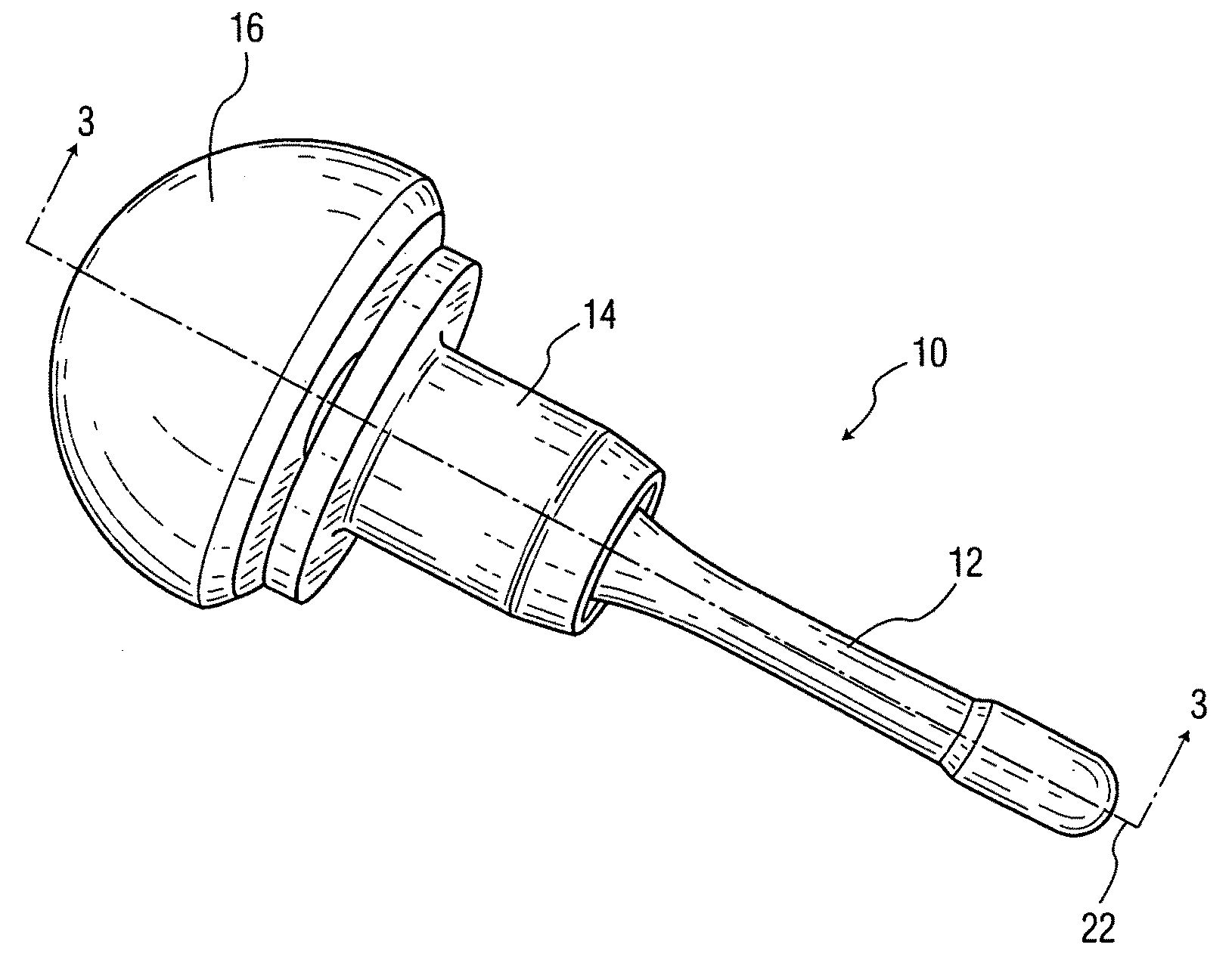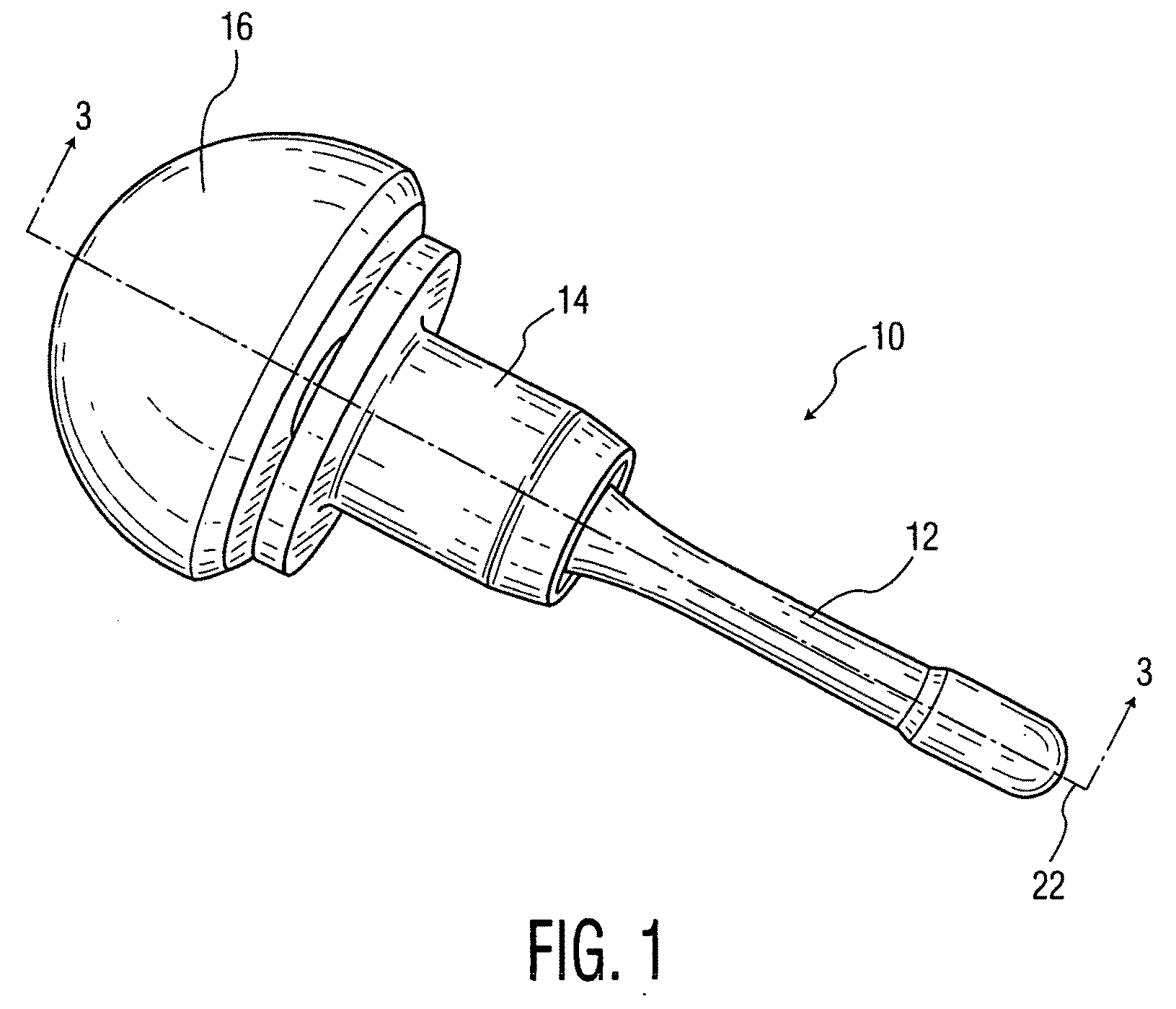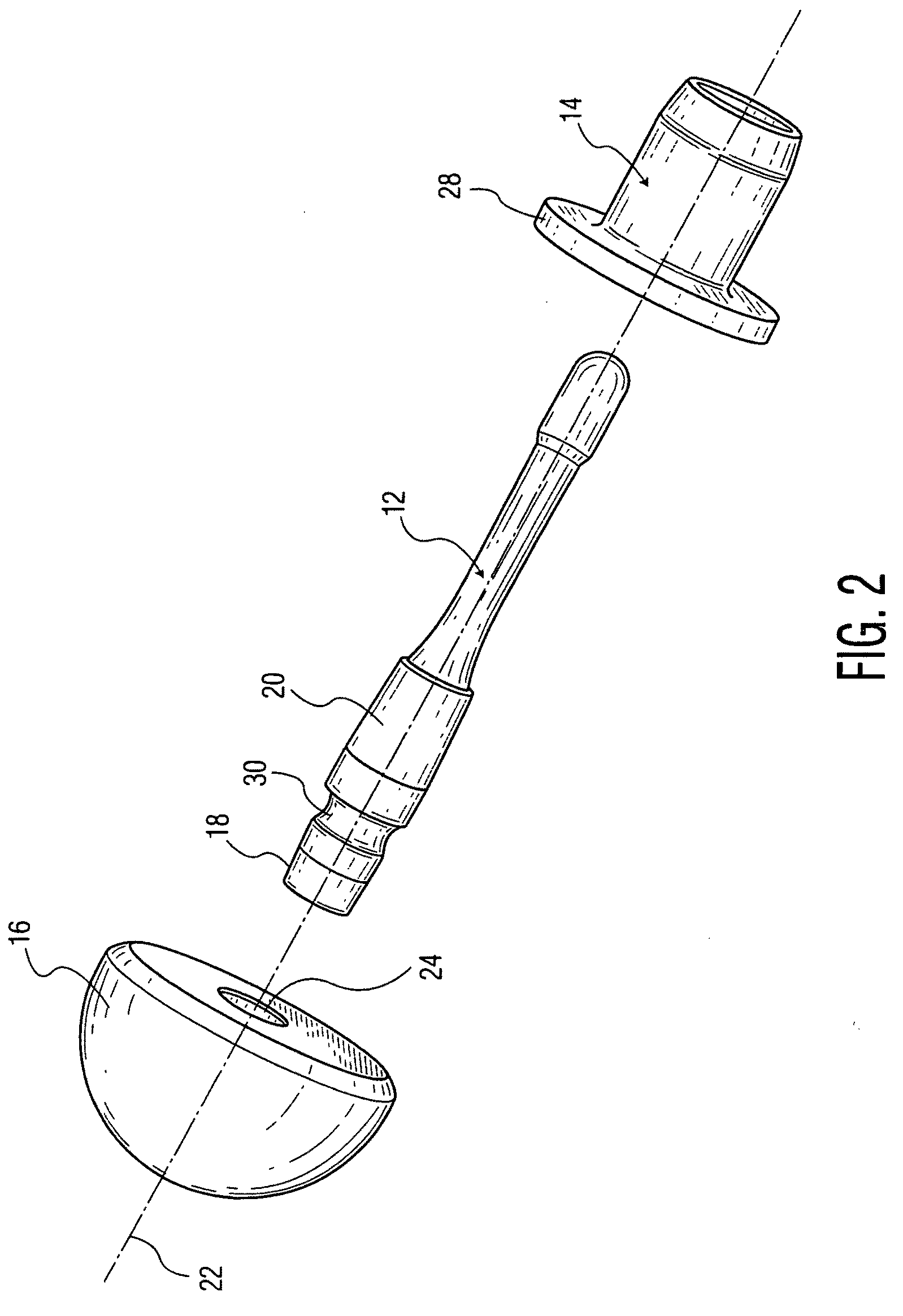Femoral head prosthesis
a femoral head and prosthesis technology, applied in the field of hip replacement, can solve the problems of proximal bone loss, requiring the resection of the majority of the femoral neck, and reducing the activity of patients, and achieve the effect of reducing the stiffness of the implant constru
- Summary
- Abstract
- Description
- Claims
- Application Information
AI Technical Summary
Benefits of technology
Problems solved by technology
Method used
Image
Examples
Embodiment Construction
[0042]Referring to FIG. 1 there is shown a femoral head prosthesis generally denoted as 10 which comprises a shaft or intermediate solid body member 12, a sleeve 14 and a part spherical femoral prosthetic head 16. FIG. 1 shows the elements 12, 14 and 16 in an assembled configuration.
[0043]Referring to FIG. 2 there is shown an exploded view of the femoral head prosthesis of FIG. 1 with the proximal prosthetic femoral head 16 separated proximally from shaft 12 and the sleeve 14 separated distally of the shaft 12. It can be seen that shaft or intermediate solid body member 12 includes a proximal conically tapered male portion 18 and an intermediate conically tapered male portion 20. In the preferred embodiment conically tapered portion 18 is tapered towards the longitudinal axis 22 of shaft 12 while moving from a distal to proximal direction. The intermediate tapered portion 20 is tapered towards longitudinal axis 22 on moving from the proximal to distal direction.
[0044]As best seen in...
PUM
 Login to View More
Login to View More Abstract
Description
Claims
Application Information
 Login to View More
Login to View More - R&D
- Intellectual Property
- Life Sciences
- Materials
- Tech Scout
- Unparalleled Data Quality
- Higher Quality Content
- 60% Fewer Hallucinations
Browse by: Latest US Patents, China's latest patents, Technical Efficacy Thesaurus, Application Domain, Technology Topic, Popular Technical Reports.
© 2025 PatSnap. All rights reserved.Legal|Privacy policy|Modern Slavery Act Transparency Statement|Sitemap|About US| Contact US: help@patsnap.com



